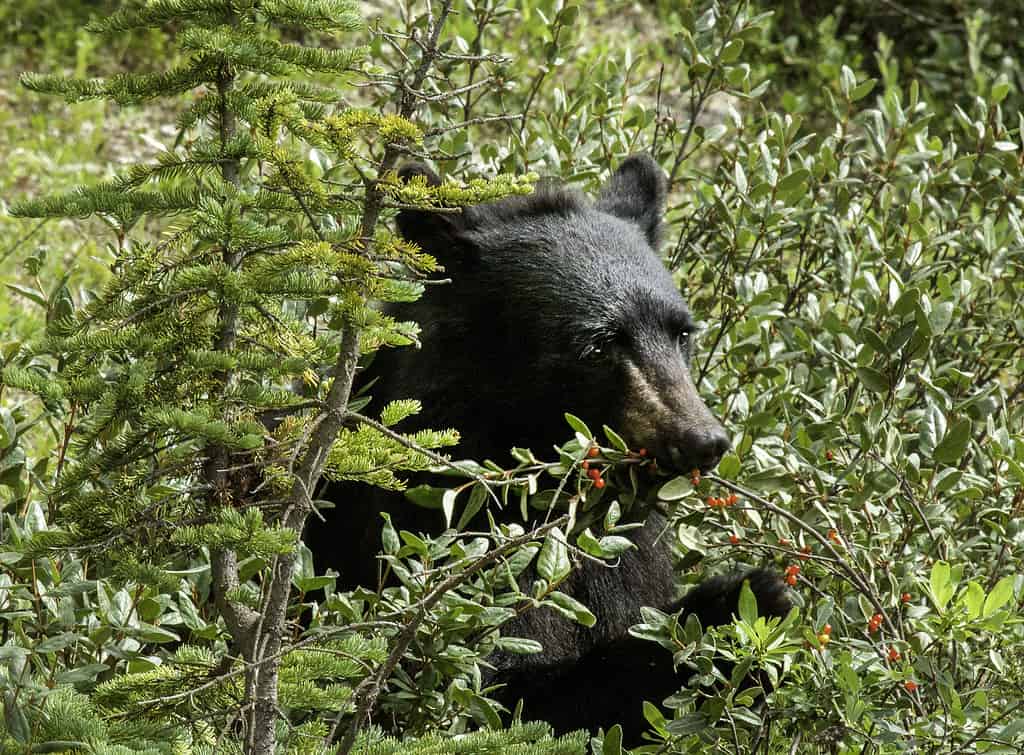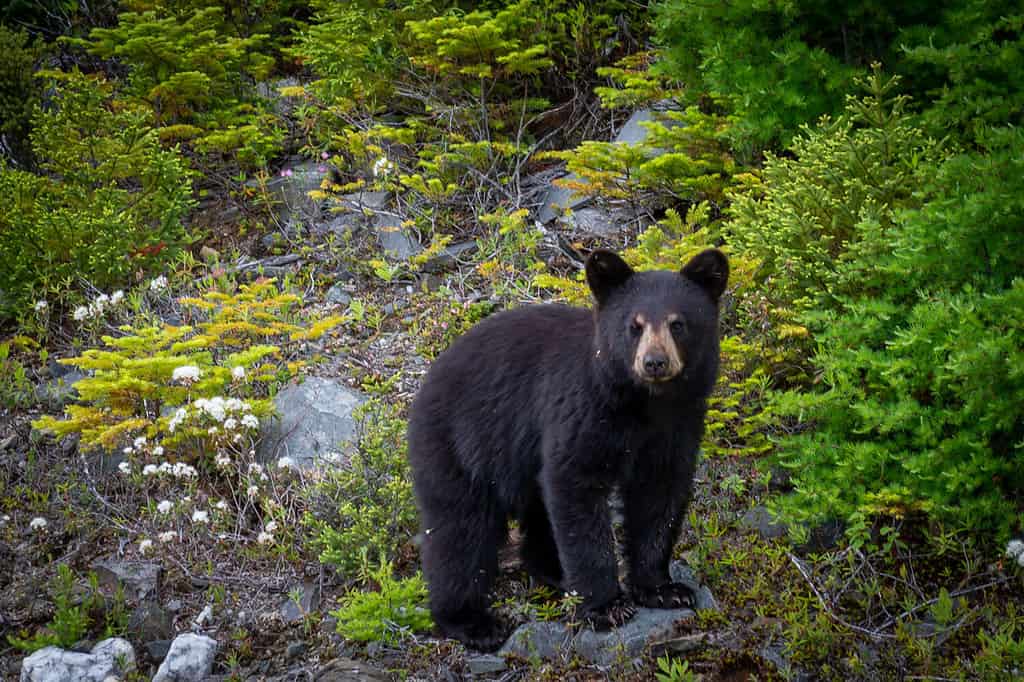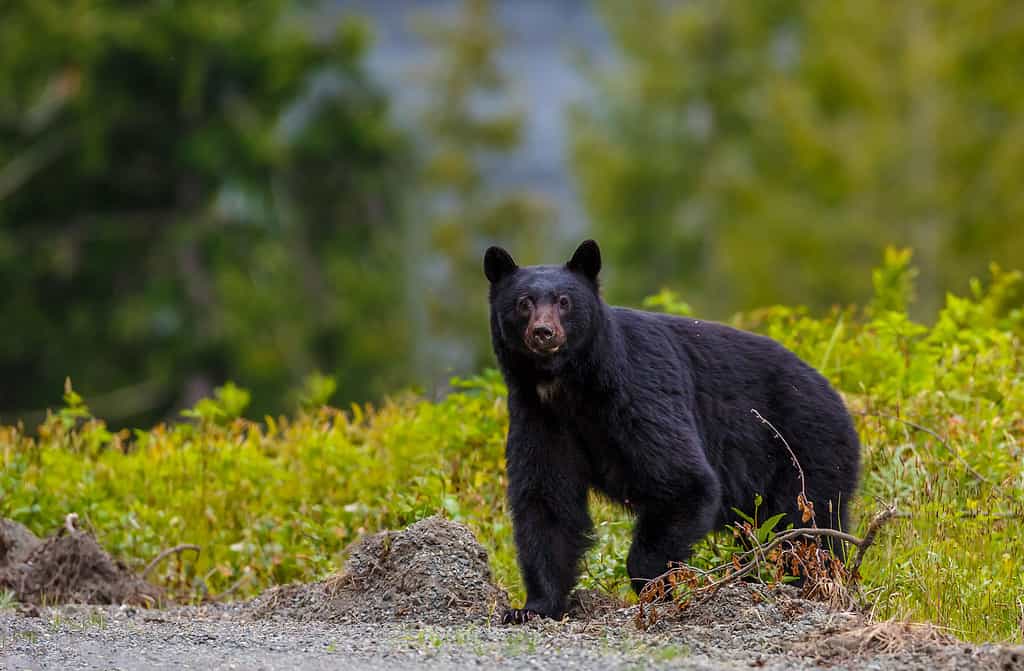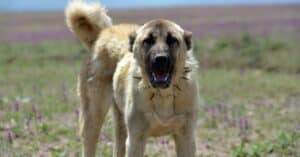While black bears once roamed the entire state of Ohio, their numbers have been cut down drastically throughout the years. Despite this, it’s still important to be educated about locations where these animals are frequently sighted. The eastern portion of Ohio in particular is a black bear hotspot, and people from several counties within this region have reported encounters with them. Let’s discuss nine places where you’re most likely to encounter black bears in Ohio and review helpful safety tips that you can use if you find yourself face-to-face with one.
Black Bears in Ohio: A Brief Overview

Black bears usually live for about 30 years in the wild.
©millermountainman/ via Getty Images
Currently, black bears are classified as endangered in the state of Ohio. This is due to overhunting, loss of natural habitat, and increasing urbanization. Hunting or harming them is strictly forbidden and anyone caught doing so can expect to pay a hefty fine. In some cases, perpetrators may even face jail time. At one point during the mid-1800s, residents believed that there weren’t any black bears living in the state. Luckily, they were wrong, and a little more than a century later, sightings began to increase once more. Since this time, conservation efforts have increased to help restore their populations. It is currently estimated that Ohio has a population of roughly 100 black bears.
Where You Might Encounter Black Bears in Ohio
Black bears prefer to live in forested habitats throughout eastern Ohio. According to the Ohio Department of Natural Resources, some of the most popular places for black bear sightings are Ashtabula County, Geauga County, Vinton County, Washington County, Mahoning County, Hocking County, Athens County, Lake County, and Trumbull County. Wayne National Forest in particular is a popular spot for black bear sightings, and it is located across several of these Ohio counties.
When Are You Most Likely to See Black Bears in Ohio?

Black bears are incredibly strong. They have a bite force of roughly 800PSI.
©Dolores M. Harvey/Shutterstock.com
Although black bears live in Ohio year-round, a majority of sightings are reported during the warmer months. This is typically from May to August. According to the National Park Service, “Black bears spend the winter months in dens to avoid the cold weather and lack of available food. They make their dens in hollow trees or logs, under the root mass of a tree, in rock crevices, or even high in a tree in warmer climates. Bears may spend up to six months in hibernation, during which they do not eat, drink, or expel waste.” As temperatures begin to warm up, black bears will emerge from their dens.
What Causes Black Bear-Human Encounters?
Black bear-human encounters are usually prompted by their search for food. In order to protect yourself, securely store any food or garbage you have if you’re living or visiting an area that has black bear activity. It’s especially important to keep this in mind if you’re camping, picnicking, or barbecuing during the summer, as these activities can be major attractors. It is very rare that black bears look at human beings as a potential food source. Instead, they’re typically more interested in the food in your possession. To combat this, individuals can purchase bear-proof food storage, which is available for purchase from a variety of retailers.
Safety Tips to Keep in Mind if You Encounter Black Bears

At maturity, many black bears weigh between 100 and 600 pounds.
©Menno Schaefer/Shutterstock.com
If you find yourself in a situation where you’re in close proximity to a black bear, don’t panic. Luckily, compared to other bears such as brown bears or polar bears, black bears are less aggressive. However, if these animals feel threatened or scared, they may attack. Because of this, it’s best to create as much distance between yourself and the black bear as possible. Refrain from making sudden movements such as running away from the black bear. Back up slowly and try to make yourself appear as large as you possibly can.
Black bear attacks are quite rare. However, if you find that one is persistently following you, begin making loud noises by yelling or using an air horn if need be. If you happen to be carrying bear mace, use it as a last resort if all other measures don’t seem to be working. The likelihood is that after being sprayed, the bear will retreat. Take this opportunity to abscond the scene as quickly and safely as you can.
Final Thoughts
Although encountering a black bear may be intimidating and frightening, the most important thing to do in these situations is to remain calm. If you find yourself panicked or anxiety-stricken, practicing proper bear safety might be difficult. However, it’s good to remember that these animals are not inherently aggressive. In fact, if you’re going to have an encounter with a bear, black bears are one of the easier species to deal with. As long as you follow the proper bear safety protocol listed above, you can rest assured the encounter will go smoothly.
The photo featured at the top of this post is © christiannafzger/iStock via Getty Images
Thank you for reading! Have some feedback for us? Contact the AZ Animals editorial team.






